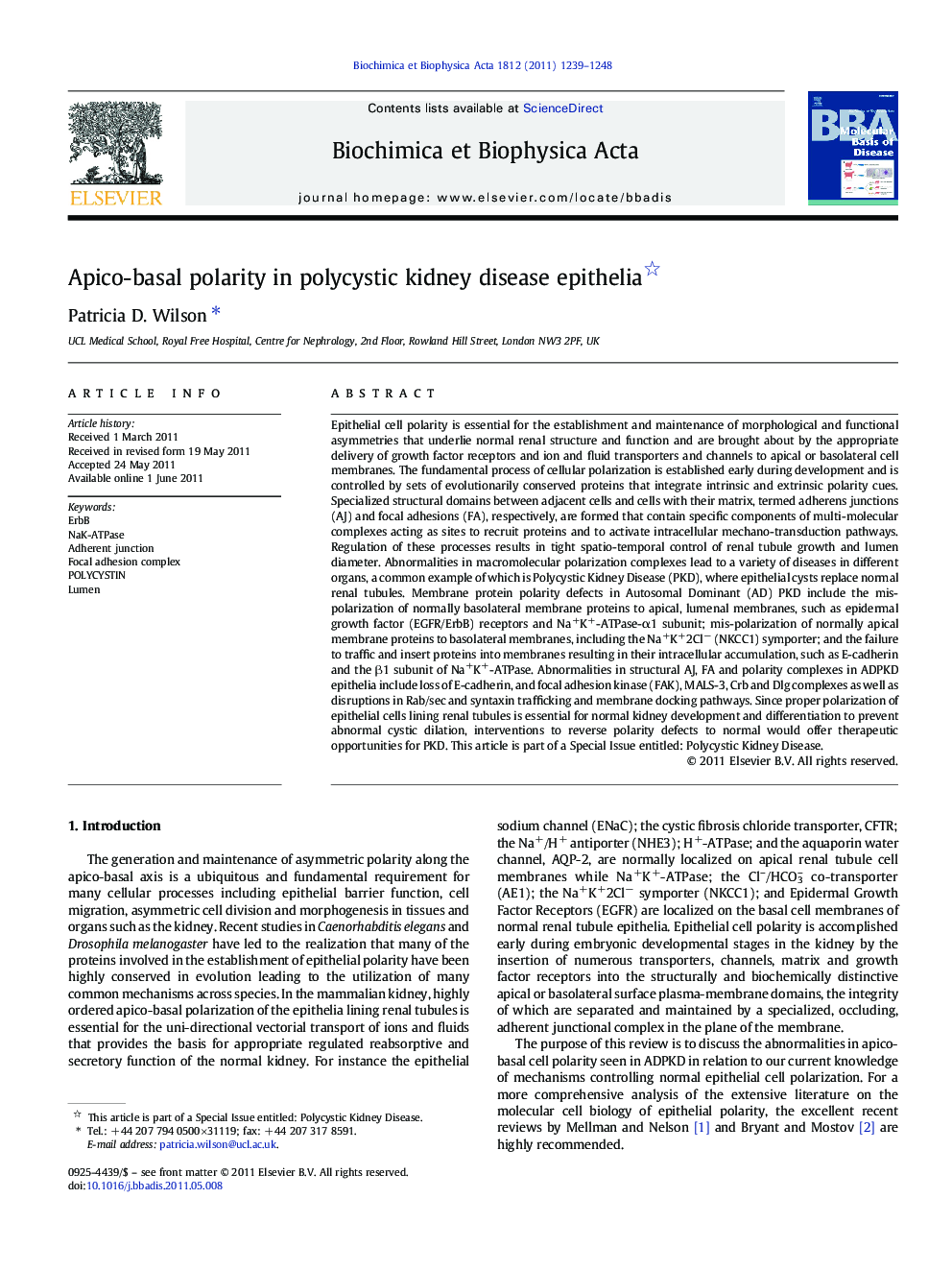| کد مقاله | کد نشریه | سال انتشار | مقاله انگلیسی | نسخه تمام متن |
|---|---|---|---|---|
| 1905161 | 1534691 | 2011 | 10 صفحه PDF | دانلود رایگان |

Epithelial cell polarity is essential for the establishment and maintenance of morphological and functional asymmetries that underlie normal renal structure and function and are brought about by the appropriate delivery of growth factor receptors and ion and fluid transporters and channels to apical or basolateral cell membranes. The fundamental process of cellular polarization is established early during development and is controlled by sets of evolutionarily conserved proteins that integrate intrinsic and extrinsic polarity cues. Specialized structural domains between adjacent cells and cells with their matrix, termed adherens junctions (AJ) and focal adhesions (FA), respectively, are formed that contain specific components of multi-molecular complexes acting as sites to recruit proteins and to activate intracellular mechano-transduction pathways. Regulation of these processes results in tight spatio-temporal control of renal tubule growth and lumen diameter. Abnormalities in macromolecular polarization complexes lead to a variety of diseases in different organs, a common example of which is Polycystic Kidney Disease (PKD), where epithelial cysts replace normal renal tubules. Membrane protein polarity defects in Autosomal Dominant (AD) PKD include the mis-polarization of normally basolateral membrane proteins to apical, lumenal membranes, such as epidermal growth factor (EGFR/ErbB) receptors and Na+K+-ATPase-α1 subunit; mis-polarization of normally apical membrane proteins to basolateral membranes, including the Na+K+2Cl− (NKCC1) symporter; and the failure to traffic and insert proteins into membranes resulting in their intracellular accumulation, such as E-cadherin and the β1 subunit of Na+K+-ATPase. Abnormalities in structural AJ, FA and polarity complexes in ADPKD epithelia include loss of E-cadherin, and focal adhesion kinase (FAK), MALS-3, Crb and Dlg complexes as well as disruptions in Rab/sec and syntaxin trafficking and membrane docking pathways. Since proper polarization of epithelial cells lining renal tubules is essential for normal kidney development and differentiation to prevent abnormal cystic dilation, interventions to reverse polarity defects to normal would offer therapeutic opportunities for PKD. This article is part of a Special Issue entitled: Polycystic Kidney Disease.
Research highlights
► Apicobasal polarity of some transporters and receptors is abnormal in ADPKD
► Composition and regulation of adherens, focal adhesion and polarity complexes determine polarity
► Cystic proteins form multi-molecular complexes with adhesive polarity complexes
► Mutations in adhesive polarity complexes and trafficking proteins cause renal cyst formation
Journal: Biochimica et Biophysica Acta (BBA) - Molecular Basis of Disease - Volume 1812, Issue 10, October 2011, Pages 1239–1248